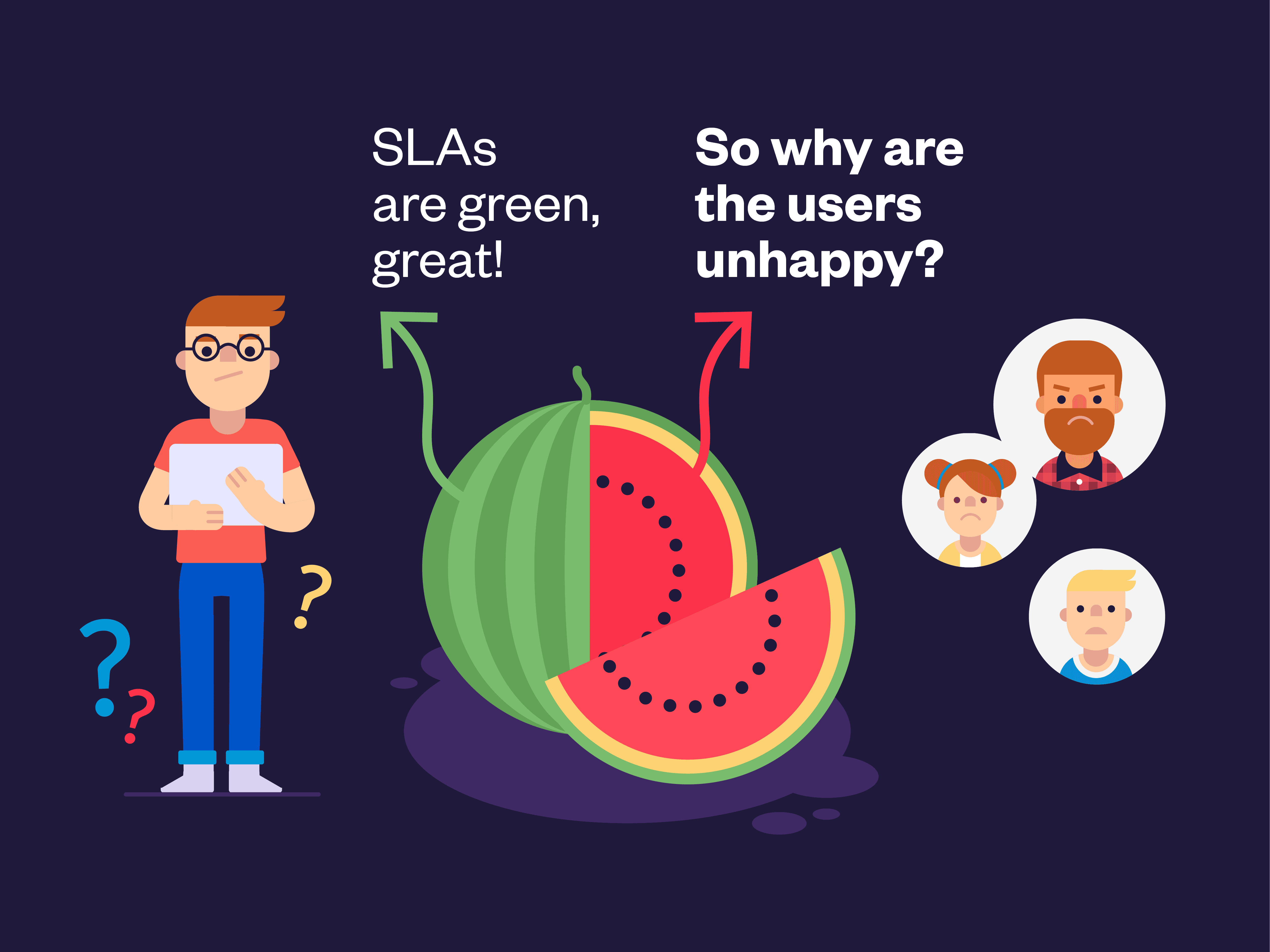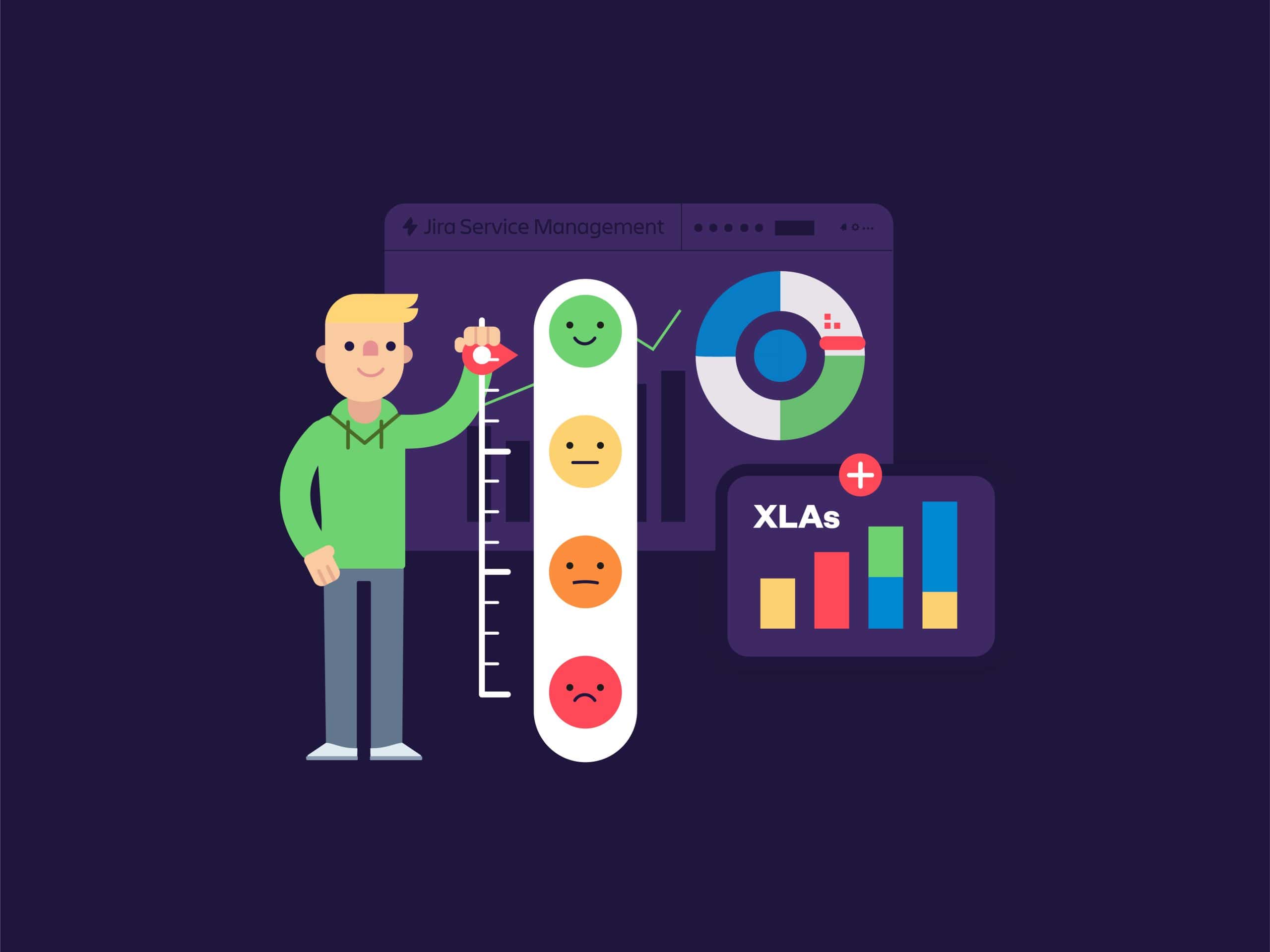Conversing with IT teams and employees often reveals a disconnect between perceived operational success and the true experiences of end-users. This discrepancy, famously known as the “Watermelon Effect”, is not an inevitable problem.
In this article, we’ll explore how integrating Experience Level Agreements (XLAs) alongside traditional Service Level Agreements (SLAs) in Jira Service Management can help identify and remedy this phenomenon.
What is the Watermelon Effect?
The Watermelon Effect occurs when IT services appear green (good) on the outside, typically shown through compliance with SLAs, but are red (problematic) on the inside due to underlying issues that affect user satisfaction.
Essentially, while services might meet operational metrics, they fail to meet the actual needs or expectations of the end-users, leading to dissatisfaction and inefficiencies that are not immediately apparent from the surface metrics.
What causes the Watermelon Effect in ITSM?
In ITSM, the Watermelon Effect can stem from several factors. Root causes vary from organization to organization, but three factors emerge as frequent patterns leading to this disconnect:
- Misalignment of metrics: Often, IT teams focus on operational metrics such as uptime and ticket closure rates, which do not necessarily translate to user satisfaction
- Lack of end-user feedback: Without regular and structured feedback mechanisms, it’s challenging for IT teams to understand the user’s perspective
- Overemphasis on quantitative metrics: Prioritizing quantitative data over qualitative insights often leads to overlooking user experiences and satisfaction
Solving this challenge requires a paradigm shift that traditional approaches do not permit. The emergence of user-centric IT frameworks and tools, such as Experience Level Agreements, can help IT teams move the needle in the right direction.
The Case for using Experience Metrics (XLAs) on top of SLAs
Experience metrics, or XLAs, serve as an essential complement to the traditional SLAs by focusing on the satisfaction and experiences of the service users. XLAs help move the focus from just meeting technical benchmarks to enhancing the actual service experience. By integrating XLAs, organizations can:
- Enhance user satisfaction: Directly address what end-users value most in their interactions with IT services
- Improve service quality: Foster a deeper understanding of the qualitative aspects of service delivery
- Drive operational excellence: Align operational goals with user expectations, leading to services that are not only efficient but also effective and well-received
Ready to take the plunge? Let’s have a look at how you can tackle this challenge and set-up XLAs in Jira Service Management.
How to implement and monitor XLAs in Jira Service Management
What you can do with native Jira Service Management features
Natively, teams can opt to enable CSAT surveys: a single question with a one-to-five star rating emailed to the reporter when a ticket is resolved or closed. This method of surveying is transactional and prioritizes operational efficiency over experience. It serves one purpose: how did ticket MyTicket-34567 go? Jira Service Management presents the results as an time series and average of those surveys.
Also natively, SLA success metrics are present stand-alone as single reports.
However, neither of these on their own have a strong connection to the overarching goals of the organization are a reflection of a service goal or an experience ambition. The goals of an organization are not respond to a ticket within 30 minutes or 2 hours. For instance, a service management team or organization seeks to provide prompt and high-quality services when onboarding new employees so they can be productive on their very first day.
Elements Pulse: the app that makes running a user-centric IT team easy
At Elements, we believe there’s a better way, and we want to empower IT to connect with its users on a level that creates value and delight beyond expectations.
We designed Elements Pulse as the central hub for IT managers and their teams to measure and improve customer satisfaction with IT services directly in Jira Service Management.
Here’s a brief overview of the app capabilities:
Fixing the Watermelon Effect with user-centric IT
To truly smash the Watermelon Effect, IT departments must adopt a user-centric approach.
By embracing XLAs alongside SLAs in Jira Service Management, IT leaders can move beyond the facade of operational success and drive genuine improvements in user satisfaction and service quality. This approach not only resolves the hidden issues within IT services but also aligns operations with the true needs and expectations of the end-users, fostering a more effective, responsive, and user-focused IT environment.
After all, to quote Maya Angelou:
“People will forget what you said, people will forget what you did, but people will never forget how you made them feel.”












